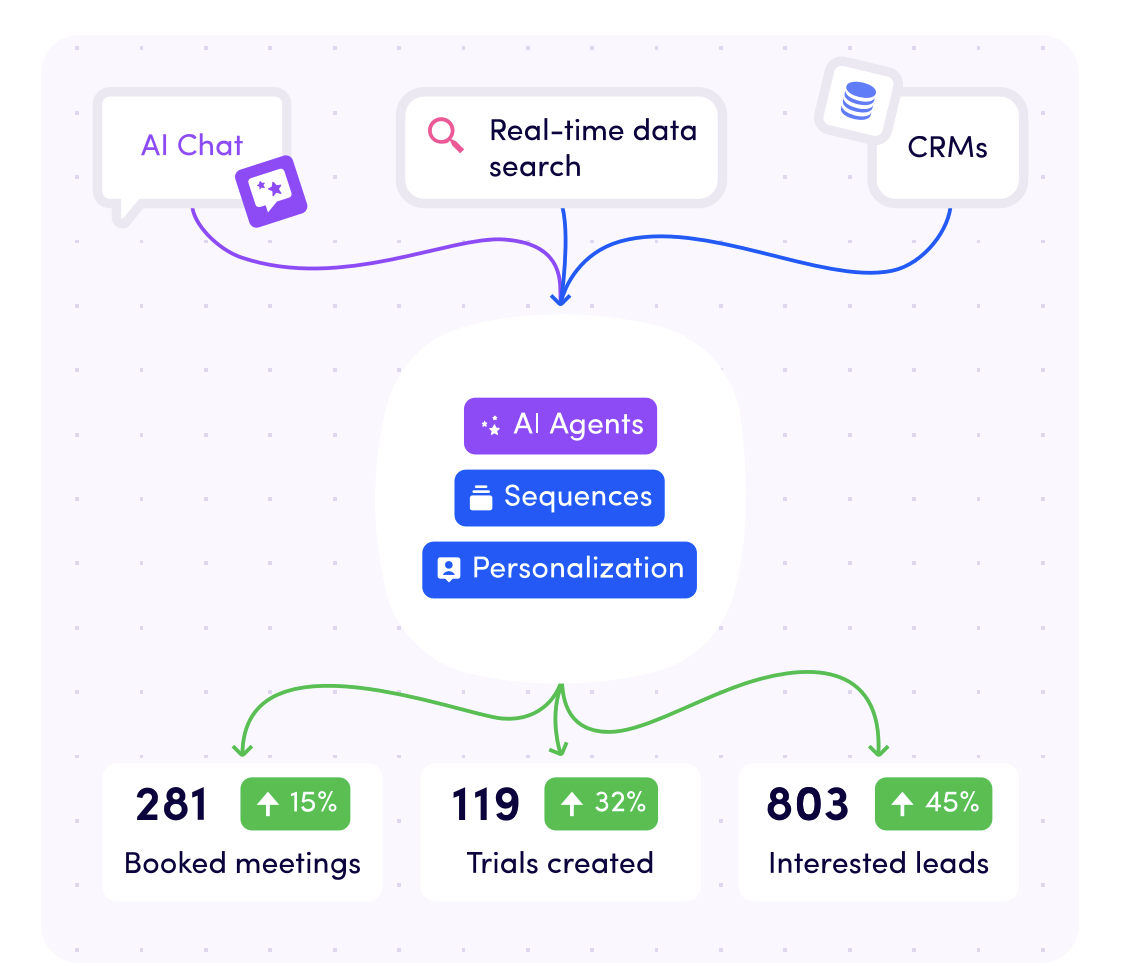Struggling with organisational silos? Discover how to transform isolated teams into a powerhouse of collaboration. By improving communication, you can align team goals with broader company objectives and create a dynamic, connected workplace.
Say goodbye to siloed barriers and hello to unified success!
We will go through:
1. What does it mean to have a silo mentality?
2. Working in Silos: Implications and Challenges
3. How to avoid silos
4. Conclusion
5. FAQ
What does it mean to have a silo mentality?
Ever felt like your team is working on its own little island, completely cut off from the rest of the company?
That’s what having a "silo mentality" is all about.
It’s when different departments or teams start operating in isolation, keeping all their information, ideas, and resources to themselves.
Instead of collaborating and sharing insights, everyone stays in their own bubble.
This attitude can lead to many misunderstandings, duplicated work, and missed opportunities.
The way an organisation is structured and its overall culture can really encourage this siloed thinking.
If the company is set up in a way where departments operate separately or if there’s a big focus on individual achievements rather than team success, it’s easy for silos to form.
People end up prioritising their own goals over the collective ones, which means they might miss out on opportunities to innovate or collaborate.
The real downside of a silo mentality is that it can limit growth and innovation.
When everyone’s just focused on their own piece of the puzzle, they can lose sight of the organisation’s overall objectives.
This narrow focus can make it hard for the company to adapt and stay competitive in a fast-changing market.
To break down these silos, it’s crucial to build a culture where open communication and collaboration are the norm, helping the organisation to thrive and achieve even greater success.

Working in Silos: Implications and Challenges
Working in silos happens when teams or departments operate in isolation, with everyone focused more on their own tasks than on the organisation’s bigger picture.
This lack of collaboration can lead to a host of problems, starting with communication breakdowns.
When teams aren’t talking to each other, it’s easy for efforts to be duplicated—one group might be working on a project without realising another team is doing something similar.
This wastes time and resources and it stops fresh ideas from flowing across the company.
Innovation also takes a hit in siloed environments.
When people are stuck in their own bubbles, they miss out on the benefits of different perspectives and expertise coming together to solve problems.
Plus, a lack of transparency and accountability often creeps in, with teams focusing on their own objectives rather than the overall company goals.
Silos can form for a variety of reasons—whether it’s physical barriers like different office locations or a mindset that prioritises individual success over teamwork.
Breaking down these barriers requires a shift in culture, where open communication, collaboration, and shared goals are front and centre.
Only then can an organisation truly work as one cohesive unit, driving success and innovation.
An effective way to break down the silos is by upskilling your team together.
That can be by taking a course together, such as Digital Communication or Growth Marketing.
Explore Growth Tribe's certification options here to find the perfect fit for your team’s needs and goals!

How to avoid silos
Breaking down silos and fostering a collaborative work environment can transform how your organisation operates.
To build a more connected and effective team, it’s essential to create a culture that encourages collaboration and alignment across all departments.
Here are some key strategies to help you avoid the pitfalls of working in silos and promote a more integrated approach:
1. Foster a Culture of Collaboration
Encourage teamwork by creating opportunities for cross-team interactions. When individual employees regularly collaborate and share ideas, it strengthens their connections and aligns efforts towards common goals.
Growth Tribe tip: Implement a “Lunch and Learn” programme where employees from different teams present their projects or areas of expertise over lunch. This not only encourages knowledge sharing but also helps build relationships across departments.
2. Establish Shared Goals
Ensure all teams are working towards the same objectives. Align departmental goals with the organisation’s vision to create clarity and coordination.
Growth Tribe tip: Organise a quarterly goal-setting workshop that includes representatives from all departments. Use this workshop to align team objectives with the organisation’s vision and ensure that everyone understands how their work contributes to the larger goals.
3. Implement Effective Tools
Use project management tools for seamless communication and task tracking. These tools keep everyone informed and help manage shared responsibilities.
Growth Tribe tip: Choose a project management tool (like Jira board) and set up shared boards or channels where all teams can track progress, assign tasks, and communicate. Provide training to ensure everyone knows how to use the tool effectively.
4. Hold Regular Meetings
Schedule regular cross-departmental meetings, for instance with the marketing and sales team, to facilitate information exchange and teamwork. This keeps everyone updated and fosters a collaborative environment.
Growth Tribe tip: Schedule bi-weekly cross-departmental meetings with a rotating agenda that includes project updates, challenges, and collaborative opportunities for employees. Use these meetings to address issues and align efforts.
5. Promote a Customer-Centric Approach
Encourage departments to work together to enhance the customer experience. When the focus is on customer satisfaction, collaboration naturally follows.
Growth Tribe tip: Create a “Customer Experience Task Force” that includes members from different departments. Task this team with reviewing customer feedback and developing cross-departmental strategies to improve the customer journey.
6. Remove Barriers
Break down physical and virtual barriers to communication. Ensure that team members can easily interact, whether they’re working on-site or remotely.
Growth Tribe tip: Invest in communication platforms like Slack that facilitate seamless interaction between remote and on-site team members. Ensure that all team members have access to and training on how to use these platforms effectively.
7. Lead by Example
Managers should actively model collaborative behaviour. Leadership that demonstrates a commitment to teamwork sets a positive example for the entire organisation.
Growth Tribe tip: Actively participate in cross-functional projects and meetings as a leader. Share your own collaborative experiences and recognise team members who demonstrate excellent teamwork to reinforce the importance of effective collaboration.
8. Create Cross-Functional Teams
Form teams with members from different departments to tackle projects. This approach leverages diverse skills and perspectives, boosting innovation and cohesion.
Growth Tribe tip: Launch an “Innovation Challenge” that requires teams from different departments to collaborate on a new project or solution. Provide clear objectives and incentives for successful outcomes to drive engagement and teamwork.
By adopting these strategies, you’ll cultivate a more connected, collaborative workplace where everyone works towards shared success.

Conclusion
Overcoming organisational silos is crucial for fostering a productive and collaborative work environment.
By addressing the barriers that separate teams and adopting a common vision, businesses can significantly enhance cross-functional collaboration.
Effective communication and a commitment to breaking down departmental silos lead to a more cohesive corporate culture and improved employee morale.
Implementing robust systems and tools for collaboration, alongside regular training and leadership support, helps eliminate duplication of efforts and ensures that all team members work towards shared goals.
Embracing these strategies boosts individual and collective performance and paves the way for long-term success.
Ultimately, nurturing a collaborative approach and maintaining transparent communication will transform silos into opportunities for growth and innovation, benefiting the entire organisation.
FAQ
1. What are organisational silos and why are they a problem?
Organisational silos occur when departments or teams within a business operate in isolation from each other. This lack of communication and understanding between teams can lead to duplicated efforts, inconsistent processes, and missed opportunities for collaboration. Silos negatively impact overall productivity and can hinder a firm’s ability to achieve unified goals.
2. How can a lack of communication contribute to the problem of silos?
A lack of communication between teams or departments exacerbates the silo mentality. When lines of communication are not clear, teams may struggle with incomplete information, misunderstandings, and a fragmented approach to achieving common goals. This can lead to inefficiencies and a decline in employee morale, as teams may feel disconnected from the broader goals.
3. What are some effective strategies to break down silos and improve collaboration?
To address silos, businesses should focus on fostering a culture of collaboration. Implementing cross-functional team meetings, using collaboration tools and platforms, and encouraging regular inter-departmental communication can bridge gaps. Leadership commitment to a unified vision and providing training on collaborative practices are also crucial for creating effective opportunities for team members.
4. How do roles within an organisation affect collaboration across silos?
Clearly defined roles can both support and hinder collaboration. While well-defined roles help ensure that responsibilities are clear, rigid role boundaries can limit opportunities for cross-team interaction. Encouraging flexible role definitions and cross-departmental projects can promote a more integrated approach, allowing team members to contribute to broader organisational goals and enhance collective success.
5. What role does organisational culture play in overcoming silo mentality?
Organisational culture is fundamental in breaking down silos. A culture that values transparency, improved communication, and mutual respect can diminish the negative impacts of silo mentality. By promoting a collaborative culture and ensuring that all employees understand and align with the company’s unified goals, organisations can create an environment where cross-team collaboration thrives and silos are effectively managed.
6. How can video conferencing and other communication tools support remote teams in overcoming silos?
Video conferencing and communication tools are essential for remote teams to stay connected and collaborate effectively. These technologies enable real-time interaction and help bridge the gap between geographically dispersed team members.
By using video conferencing, teams can maintain face-to-face communication, share updates, and discuss projects more engagingly. Additionally, effective use of collaboration platforms and communication tools ensures that all team members have access to the same information, contributing to a unified approach.
















